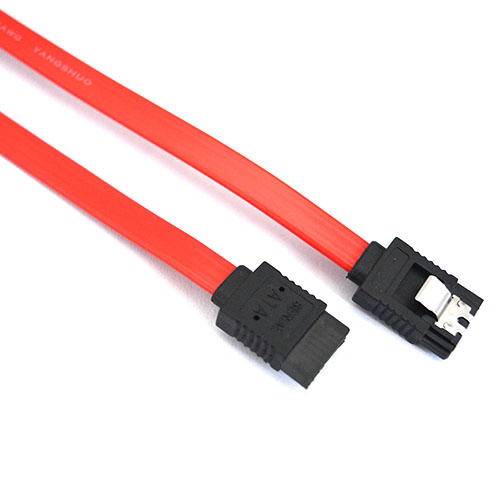Decoding Hard Drive Cables: Exploring the Differences Between SATA and IDE
In the realm of hard drive connectivity, two primary cable types have long been at the forefront: SATA (Serial ATA) and IDE (Integrated Drive Electronics). While both serve the essential function of connecting hard drives to computers, they differ significantly in terms of design, performance, and compatibility. Let's delve into the distinctions between SATA and IDE hard drive cables to help you make informed decisions when setting up your storage systems.

1. Understanding SATA Hard Drive Cables
SATA, short for Serial ATA, represents the newer and more prevalent standard in hard drive connectivity. SATA cables feature a thinner and more streamlined design compared to their IDE counterparts. These cables utilize a serial data transfer method, allowing for faster and more efficient data transmission between the hard drive and the computer's motherboard. SATA cables also feature a simpler and more user-friendly connector design, with a distinctive L-shaped connector that ensures proper alignment during installation.
2. Exploring IDE Hard Drive Cables
In contrast, IDE, or Integrated Drive Electronics, cables are an older standard that has largely been phased out in favor of SATA. IDE cables are characterized by their wide, flat ribbon-like design and parallel data transfer method. They typically feature multiple connectors, allowing for the connection of multiple IDE devices such as hard drives and optical drives to a single IDE controller on the motherboard. IDE cables are known for their bulkier and less flexible construction compared to SATA cables.
3. Performance Differences
One of the primary distinctions between SATA and IDE hard drive cables lies in their performance capabilities. SATA cables offer significantly faster data transfer speeds compared to IDE cables. SATA interfaces support data transfer rates of up to 6 gigabits per second (Gbps), while IDE interfaces typically max out at around 133 megabytes per second (MBps). This superior performance makes SATA cables ideal for modern high-speed storage devices and ensures smoother overall system performance.
4. Compatibility Considerations
When considering SATA vs. IDE hard drive cables, compatibility is an important factor to keep in mind. Most modern motherboards and hard drives are designed to support SATA connectivity, making SATA cables the preferred choice for new system builds and upgrades. However, older systems may still rely on IDE connectivity, necessitating the use of IDE cables. It's essential to check the specifications of your motherboard and hard drive to ensure compatibility with the appropriate cable type.
5. Making the Right Choice
In conclusion, while both SATA and IDE hard drive cables serve the essential function of connecting hard drives to computers, they differ significantly in terms of design, performance, and compatibility. SATA cables offer faster data transfer speeds, a more streamlined design, and broader compatibility with modern systems, making them the preferred choice for most applications. However, IDE cables may still be necessary for older systems that rely on IDE connectivity. By understanding the differences between SATA and IDE hard drive cables, you can make informed decisions when setting up your storage systems and ensure optimal performance and compatibility.
Remember to assess your system's requirements and compatibility before selecting the appropriate hard drive cable type. Whether you opt for the speed and efficiency of SATA or the legacy compatibility of IDE, choosing the right cable ensures smooth and reliable connectivity for your storage devices.